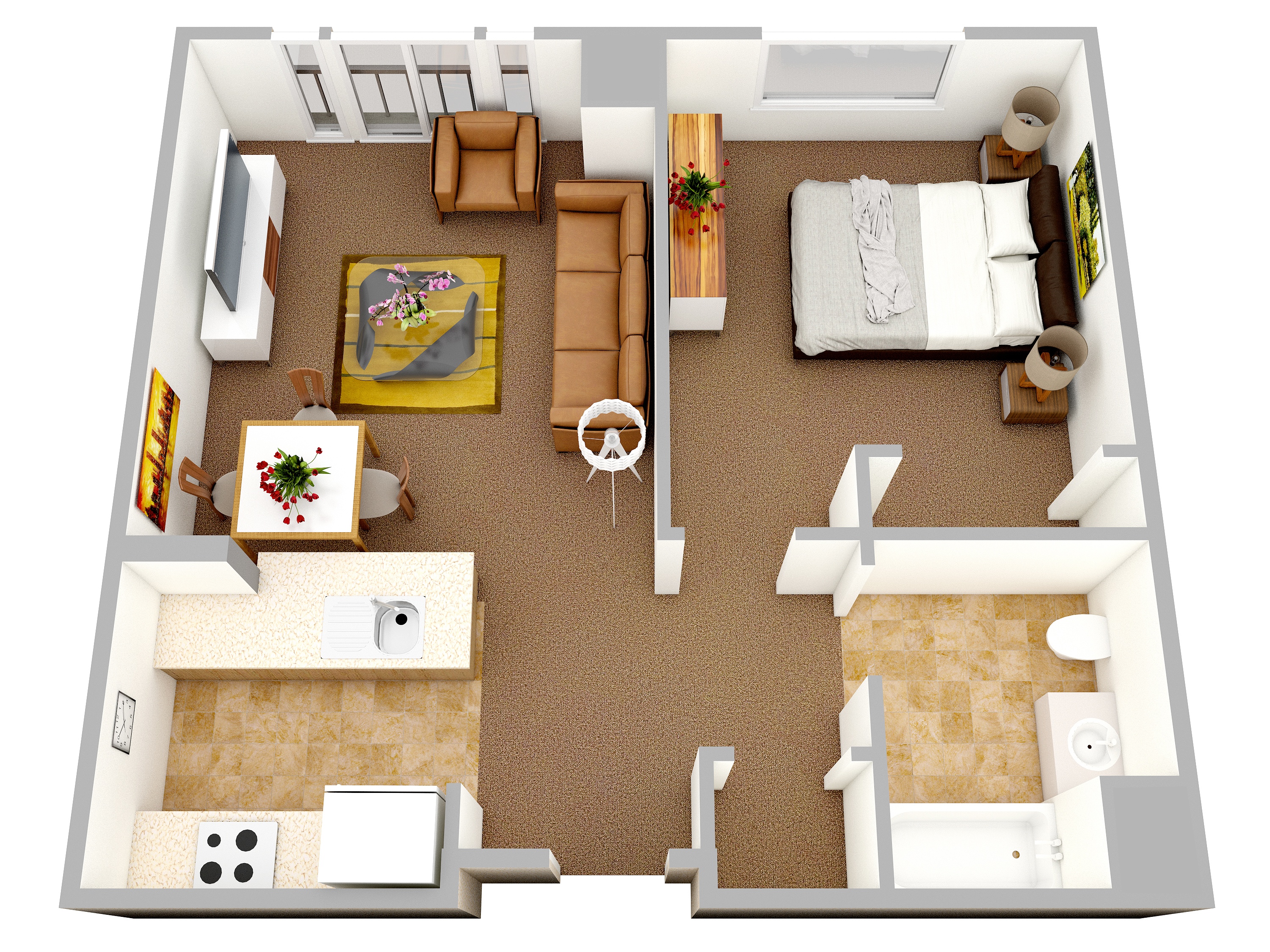Understanding 1-Bedroom Layouts

A 1-bedroom layout is a popular choice for individuals, couples, or small families seeking a comfortable and efficient living space. It offers a balance between privacy and functionality, making it suitable for various lifestyles. Understanding the different types of 1-bedroom layouts and their features can help you choose the best option for your needs.
Types of 1-Bedroom Layouts
1-bedroom layouts come in various configurations, each with its unique advantages and disadvantages. The most common types include:
- Open Floor Plan: This layout emphasizes an open and spacious feel by combining the living, dining, and kitchen areas into one large room. It provides a sense of flow and maximizes natural light. However, it may lack privacy and sound insulation.
- Traditional Layout: This layout features separate rooms for the living, dining, and kitchen areas. It offers greater privacy and sound insulation but can feel more compartmentalized and less spacious.
- Studio Apartment: A studio apartment combines the living, sleeping, and kitchen areas into a single space. It is typically smaller than a 1-bedroom apartment and offers a more affordable option. However, it can be challenging to create distinct living areas and maintain privacy.
Common 1-Bedroom Layout Configurations
Common 1-bedroom layout configurations include:
- L-Shaped Layout: This layout features a living area that extends perpendicular to the bedroom, creating a distinct separation. It provides a good balance between open space and privacy.
- U-Shaped Layout: This layout features a bedroom at the end of a hallway, with the living and kitchen areas on either side. It offers excellent privacy and separation but can feel more enclosed.
- Split-Level Layout: This layout features a bedroom on a lower level and the living, dining, and kitchen areas on a higher level. It provides a sense of space and privacy but can be challenging to navigate.
Considerations for Choosing a 1-Bedroom Layout
When choosing a 1-bedroom layout, consider your individual needs and lifestyle. Some key factors to consider include:
- Lifestyle: Do you prefer an open and social living space or a more private and secluded environment?
- Space Requirements: How much space do you need for your furniture, belongings, and activities?
- Privacy Needs: Do you require a separate bedroom for privacy or are you comfortable with an open floor plan?
- Budget: Consider the cost of rent or mortgage and any potential renovations or upgrades.
- Location: Consider the proximity to amenities, transportation, and your work or school.
Maximizing Space in a 1-Bedroom: 1 Bedroom Layout Plans

A 1-bedroom apartment presents a unique challenge: creating a functional and stylish living space within limited square footage. By implementing clever design strategies, you can transform a small apartment into a haven that feels spacious and comfortable.
Creating a Functional Layout
A well-designed layout is crucial for maximizing space. Consider the following tips to create a functional and stylish 1-bedroom apartment:
- Define Zones: Visualize your apartment as distinct zones, each serving a specific purpose. This will help you create a sense of order and separation. For example, designate areas for sleeping, living, dining, and working.
- Open Floor Plan: Consider removing unnecessary walls to create a more open and airy feel. This is particularly beneficial if your apartment has a small living room or kitchen.
- Multi-Functional Furniture: Invest in furniture that serves multiple purposes. A sofa bed, for example, can transform from a seating area into a sleeping space, saving valuable floor space.
Maximizing Vertical Space
Vertical space is often overlooked in small apartments. Here are some ideas to utilize this space effectively:
- Shelving: Install shelves along walls to store books, decor, and other items. This creates a visual focal point and reduces clutter.
- Wall-Mounted Storage: Consider wall-mounted storage solutions like coat racks, shelves, and organizers. These options maximize floor space and add visual interest.
- Overhead Storage: Utilize the space above cabinets or doorways for storage. This is ideal for items you use less frequently, such as seasonal clothing or extra linens.
Incorporating Multi-Functional Furniture, 1 bedroom layout plans
Multi-functional furniture is a game-changer for small apartments. Here are some examples:
- Sofa Bed: A sofa bed provides both seating and sleeping space, perfect for small living rooms.
- Murphy Bed: A Murphy bed folds away into a wall unit, maximizing floor space when not in use.
- Ottoman with Storage: An ottoman with storage provides extra seating and a place to stash blankets or other items.
